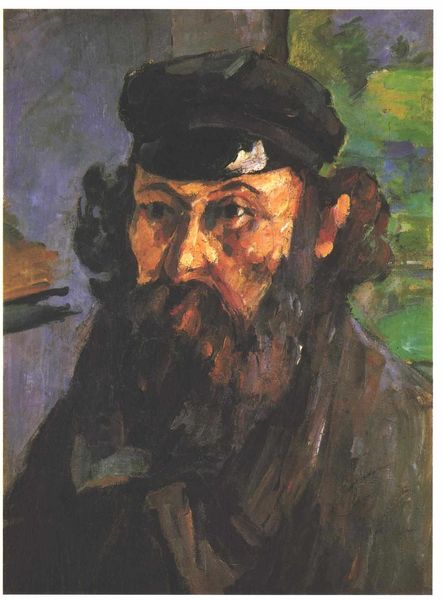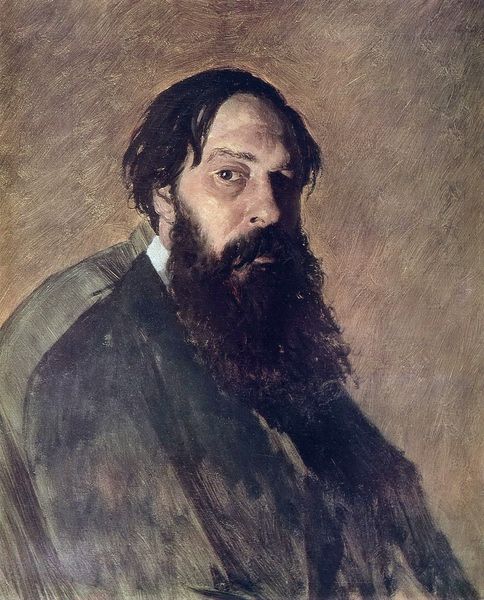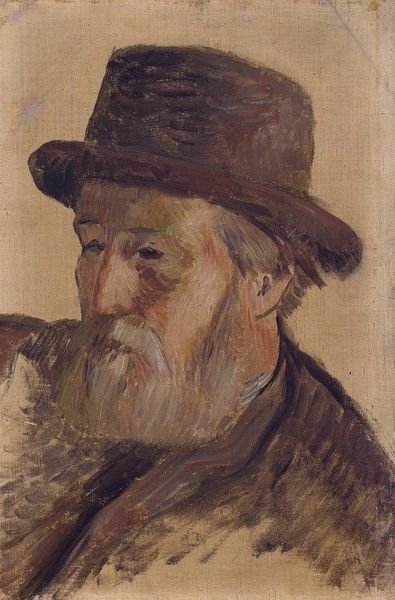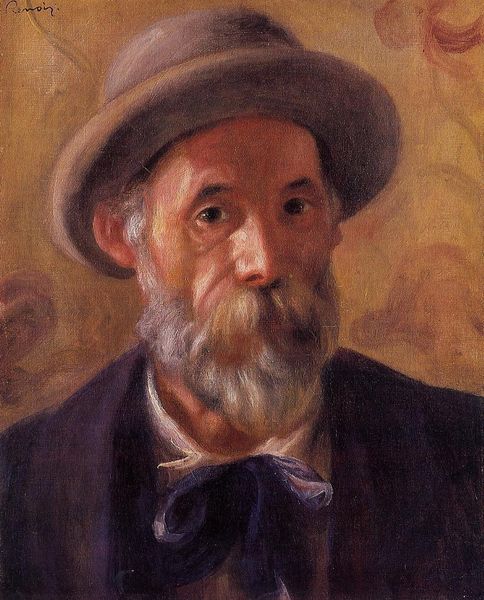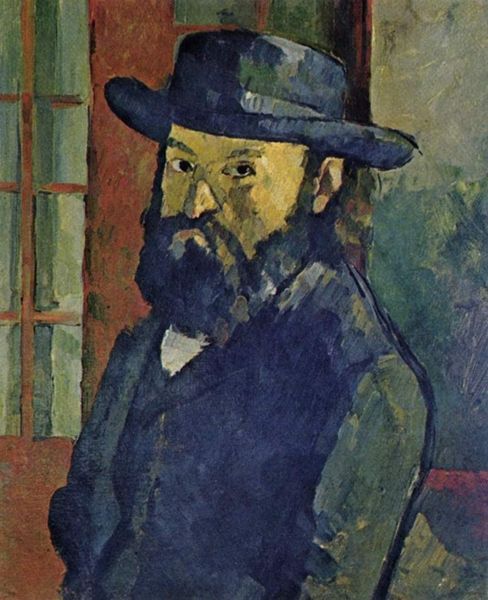
painting, plein-air, oil-paint
#
portrait
#
painting
#
impressionism
#
plein-air
#
oil-paint
#
oil painting
Copyright: Public domain
Here is Claude Monet’s portrait of Poly, a fisherman from Kervillaouen, painted in 1886. At first glance, the eye is drawn to the thick, textured brushstrokes that define the fisherman's rugged features, giving a tactile quality to the oil on canvas. Monet's use of color, primarily blues and greens, creates a sense of depth and volume. Note how the short, choppy brushstrokes build up the form, disrupting the surface of the canvas and the very notion of traditional portraiture. His approach destabilizes established conventions, inviting us to reconsider how we perceive both the subject and the medium. Ultimately, Monet’s method is about the act of painting itself. The artwork serves not as a mere representation but as an exploration of the artist's perception and the very language of art. By focusing on the materiality and structure of the painting, Monet challenges fixed meanings. The artwork thus functions as a catalyst for ongoing interpretation, reflecting the dynamic interplay between art and its cultural context.
Comments
No comments
Be the first to comment and join the conversation on the ultimate creative platform.


